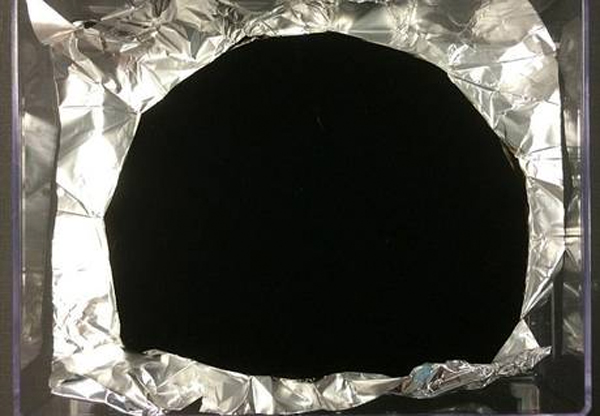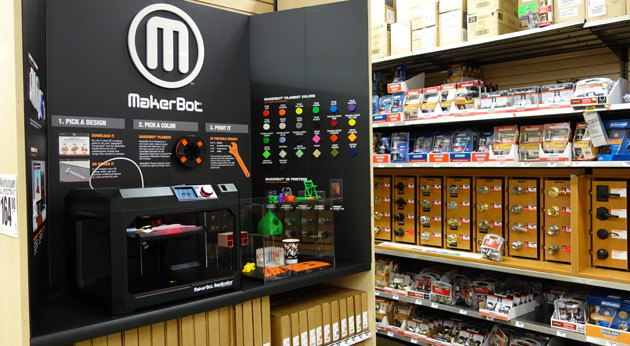Submitted by: (via Daily Picks and Flicks)
Cooper Griggs
Shared posts
You Might Get a Sneak Peek After Eating Some Bacon
"This hit me while doing some homework on the subject."...
Toddlers Reacting To Tasting Lemon for the First Time
Lemons can be a great source of entertainment. Especially when you give babies the opportunity to taste it for the first time! Check out these images of toddlers reacting to tasting lemon for the first time..
Below is the actual video collaboration between David Wile and April Maciborka of babies tasting lemon for the first time.
The post Toddlers Reacting To Tasting Lemon for the First Time appeared first on Better Parenting.
Netflix already stopped mailing DVDs on Saturdays, but you probably didn't notice
Cooper Griggsinteresting
 The USPS may not have gone forward with its plans to kill Saturday mail delivery, but Netflix isn't waiting. A few customers have noticed it's no longer processing shipments on Saturdays, opting for a five day schedule instead. Company spokesman...
The USPS may not have gone forward with its plans to kill Saturday mail delivery, but Netflix isn't waiting. A few customers have noticed it's no longer processing shipments on Saturdays, opting for a five day schedule instead. Company spokesman...
This new carbon nanotube material is the darkest thing on the planet
Cooper Griggsneat
 We know what darkness is: it's the absence of light, and something we each encounter when the sun goes down. Seeing darkness in broad daylight on the other hand, that's weird. It's also, astonishingly, a completely possible thing. Sitting on a piece...
We know what darkness is: it's the absence of light, and something we each encounter when the sun goes down. Seeing darkness in broad daylight on the other hand, that's weird. It's also, astonishingly, a completely possible thing. Sitting on a piece...
WSJ writer gives Twitter password to the internet and the obvious happens
Cooper GriggsThere is a link to the thing this most reminded me of; the Lifelock CEO soc. sec. number being published. He has had his identity stolen 13 times apparently.
 We put a ton of trust in technology everyday, but are you confident enough in two-factor authentication to give out any of your passwords? Christopher Mims of The Wall Street Journal is. In a post on the site proclaiming that passwords are "finally...
We put a ton of trust in technology everyday, but are you confident enough in two-factor authentication to give out any of your passwords? Christopher Mims of The Wall Street Journal is. In a post on the site proclaiming that passwords are "finally...
Google strikes smart contact lens deal to track diabetes and fix farsightedness
 With Glass and Android Wear, Google has already invested a lot of time and resources into developing the next-generation of wearables, but it's another of its eye-focused projects that has today received its first major boost. The search giant's...
With Glass and Android Wear, Google has already invested a lot of time and resources into developing the next-generation of wearables, but it's another of its eye-focused projects that has today received its first major boost. The search giant's...
Smartphone-controlled crematoriums are a thing that exist
Cooper Griggswhoa
 This post may not be suitable for readers of a sensitive disposition.
No one likes to think too much about where we go when we've passed on, but you probably imagine crematoriums to remain the same as they have done for the last century. It turns...
This post may not be suitable for readers of a sensitive disposition.
No one likes to think too much about where we go when we've passed on, but you probably imagine crematoriums to remain the same as they have done for the last century. It turns...
White House responds to Tesla direct sales: We love Tesla, can't help
Cooper GriggsGRRRRRRR
 Though nearly 150,000 people signed a petition last summer asking the United States government to allow Tesla Motors the ability to sell cars directly to consumers, the White House won't help. "We believe in the goal of improving consumer choice for...
Though nearly 150,000 people signed a petition last summer asking the United States government to allow Tesla Motors the ability to sell cars directly to consumers, the White House won't help. "We believe in the goal of improving consumer choice for...
My staff is awesome
Mrs. Memory: "Hi, I need to come back and see Dr. Grumpy."
Mary: "Um... Actually, you have an appointment today, at 1:45."
Mrs. Memory: "No I don't."
Mary: "You do, ma'am."
Mrs. Memory: "I most certainly do not. Otherwise I wouldn't be calling you. Now, as I was saying, I need to see Dr. Grumpy again."
Mary: "Okay, well, if you'd like to come in today we have an opening at 1:45?"
Mrs. Memory: "Oh, that works perfectly. I'll be there."
Mary: "Great! See you then."
Mrs. Memory: "Thank you for getting me in so quickly."
FCC extends the deadline for comments on net neutrality until Friday night
 The FCC asked for comments on its proposal for a new version of net neutrality -- that sets up rules allowing ISPs to sell access to "fast lanes" -- and the internet has responded loudly. Over 647,000 messages were received as of last week, and today...
The FCC asked for comments on its proposal for a new version of net neutrality -- that sets up rules allowing ISPs to sell access to "fast lanes" -- and the internet has responded loudly. Over 647,000 messages were received as of last week, and today...
Geometric Beehive Sculptures by Ren Ri
Cooper GriggsFor you bee people :)




Artist and beekeeper Ren Ri employs bees in the construction of these amazing encapsulated sculptures. The artist first builds transparent polyhedrons and cubes with an inner framework of wooden dowels, at the center of which he places the queen. After introducing the rest of the hive, he then rotates the sculpture every seventh day based on the roll of a die, an act that he says references the biblical concept of creation. Not only does the dice roll create an element of randomness, but it also changes the effect of gravity, causing the bees to build in different directions resulting in more evenly dispersed forms.
While we’ve seen several artists using honeycomb as a medium such as Aganetha Dyck and Tomáš Libertiny, Ri seems to put slightly more emphasis on the beehive itself as being the primary form on display. You can see a few more photos over on his website. (via iGnant, Huffington Post)
Breach is a completely modular, hackable and open source web browser
Cooper Griggsanyone try it yet?
 When it comes to surfing the web, our options are limited: the market is dominated by three or four mainstream web browsers, all of which share major similarities in design and function. Unless you want to build your own browsing program, you're...
When it comes to surfing the web, our options are limited: the market is dominated by three or four mainstream web browsers, all of which share major similarities in design and function. Unless you want to build your own browsing program, you're...
Precious Petra of Jordan
Designated as a World Heritage Site by UNESCO in 1985, the ancient city of Petra, Jordan, offers carved-rock architecture unlike any other, some of which may have been built back in the 5th century BCE.
“This was one of the more stressful shoots I’ve been on in the last year. I had really wanted a shot of this place at night, with the candles, stars and, most importantly, no people!”
“Thankfully, due to some great planning and preparation, I finally got the shot I always wanted!” – Conor MacNeill
“Another grand building in Petra, which you can climb up to and go inside. Other buildings are closed. You can see in some of the upper windows that rocks are blocking the windows. When Burckhardt discovered Petra it was covered in centuries of rubble, and earthquake damage, but he knew immediately he’d found the lost city. It has since been cleared and is quite magnificent.” – Louise Lindsay
“Never seen shots of Petra’s Monastery at night, this beautiful giant deserves one.” – Xiao Yang
“Petra’s theater is cut out of solid rock. The theater is actually Nabataean and was constructed long before the Romans entered Petra.” – Ameeta Deshpande
Because of its ornate and well-preserved facade, the Treasury building is probably the most recognizable monument of Petra.
Enjoy, and share, more photography in the Precious Petra of Jordan gallery and Petra of Jordan group.
Core Truths: 10 Common GMO Claims Debunked
Cooper Griggsvia Roumen

Later this year, the U.S. Department of Agriculture may approve the Arctic Granny and Arctic Golden, the first genetically modified apples to hit the market. Although it will probably be another two years before the non-browning fruits appears in stores, at least one producer is already scrambling to label its apples GMO-free.
The looming apple campaign is just the latest salvo in the ongoing war over genetically modified organisms (GMOs)—one that's grown increasingly contentious. Over the past decade, the controversy surrounding GMOs has sparked worldwide riots and the vandalism of crops in Oregon, the United Kingdom, Australia, and the Philippines. In May, the governor of Vermont signed a law that will likely make it the first U.S. state to require labels for genetically engineered ingredients; more than 50 nations already mandate them. Vermont State Senator David Zuckerman told Democracy Now!, "As consumers, we are guinea pigs, because we really don't understand the ramifications."
But the truth is, GMOs have been studied intensively, and they look a lot more prosaic than the hype contends. To make Arctic apples, biologists took genes from Granny Smith and Golden Delicious varieties, modified them to suppress the enzyme that causes browning, and reinserted them in the leaf tissue. It's a lot more accurate than traditional methods, which involve breeders hand-pollinating blossoms in hopes of producing fruit with the desired trait. Biologists also introduce genes to make plants pest- and herbicide-resistant; those traits dominate the more than 430 million acres of GMO crops that have already been planted globally. Scientists are working on varieties that survive disease, drought, and flood.
So what, exactly, do consumers have to fear? To find out, Popular Science chose 10 of the most common claims about GMOs and interviewed nearly a dozen scientists. Their collective answer: not much at all.
1) Claim: Genetic engineering is a radical technology.

Humans have been manipulating the genes of crops for millennia by selectively breeding plants with desirable traits. (A perfect example: the thousands of apple varieties.) Virtually all of our food crops have been genetically modified in some way. In that sense, GMOs are not radical at all. But the technique does differ dramatically from traditional plant breeding.
Here's how it works: Scientists extract a bit of DNA from an organism, modify or make copies of it, and incorporate it into the genome of the same species or a second one. They do this by either using bacteria to deliver the new genetic material, or by shooting tiny DNA-coated metal pellets into plant cells with a gene gun. While scientists can't control exactly where the foreign DNA will land, they can repeat the experiment until they get a genome with the right information in the right place.
That process allows for greater precision. "With GMOs, we know the genetic information we are using, we know where it goes in the genome, and we can see if it is near an allergen or a toxin or if it is going to turn [another gene] off," says Peggy G. Lemaux, a plant biologist at the University of California, Berkeley. "That is not true when you cross widely different varieties in traditional breeding."
2) Claim: GMOs are too new for us to know if they are dangerous.
 It depends on how you define new. Genetically engineered plants first appeared in the lab about 30 years ago and became a commercial product in 1994. Since then, more than 1,700 peer-reviewed safety studies have been published, including five lengthy reports from the National Research Council, that focus on human health and the environment. The scientific consensus is that existing GMOs are no more or less risky than conventional crops.
It depends on how you define new. Genetically engineered plants first appeared in the lab about 30 years ago and became a commercial product in 1994. Since then, more than 1,700 peer-reviewed safety studies have been published, including five lengthy reports from the National Research Council, that focus on human health and the environment. The scientific consensus is that existing GMOs are no more or less risky than conventional crops.
3) Claim: Farmers can't replant genetically modified seeds.
 So-called terminator genes, which can make seeds sterile, never made it out of the patent office in the 1990s. Seed companies do require farmers to sign agreements that prohibit replanting in order to ensure annual sales, but Kent Bradford, a plant scientist at the University of California, Davis, says large-scale commercial growers typically don't save seeds anyway. Corn is a hybrid of two lines from the same species, so its seeds won't pass on the right traits to the next generation. Cotton and soy seeds could be saved, but most farmers don't bother. "The quality deteriorates—they get weeds and so on—and it's not a profitable practice," Bradford says.
So-called terminator genes, which can make seeds sterile, never made it out of the patent office in the 1990s. Seed companies do require farmers to sign agreements that prohibit replanting in order to ensure annual sales, but Kent Bradford, a plant scientist at the University of California, Davis, says large-scale commercial growers typically don't save seeds anyway. Corn is a hybrid of two lines from the same species, so its seeds won't pass on the right traits to the next generation. Cotton and soy seeds could be saved, but most farmers don't bother. "The quality deteriorates—they get weeds and so on—and it's not a profitable practice," Bradford says.
4) Claim: We don't need GMOs—there are other ways to feed the world.
 GMOs alone probably won't solve the planet's food problems. But with climate change and population growth threatening food supplies, genetically modified crops could significantly boost crop output. "GMOs are just one tool to make sure the world is food-secure when we add two billion more people by 2050," says Pedro Sanchez, director of the Agriculture and Food Security Center at Columbia University's Earth Institute. "It's not the only answer, and it is not essential, but it is certainly one good thing in our arsenal."
GMOs alone probably won't solve the planet's food problems. But with climate change and population growth threatening food supplies, genetically modified crops could significantly boost crop output. "GMOs are just one tool to make sure the world is food-secure when we add two billion more people by 2050," says Pedro Sanchez, director of the Agriculture and Food Security Center at Columbia University's Earth Institute. "It's not the only answer, and it is not essential, but it is certainly one good thing in our arsenal."
5) Claim: GMOs cause allergies, cancer, and other health problems.
 Many people worry that genetic engineering introduces hazardous proteins, particularly allergens and toxins, into the food chain. It's a reasonable concern: Theoretically, it's possible for a new gene to express a protein that provokes an immune response. That's why biotech companies consult with the Food and Drug Administration about potential GMO foods and perform extensive allergy and toxicity testing. Those tests are voluntary but commonplace; if they're not done, the FDA can block the products.
Many people worry that genetic engineering introduces hazardous proteins, particularly allergens and toxins, into the food chain. It's a reasonable concern: Theoretically, it's possible for a new gene to express a protein that provokes an immune response. That's why biotech companies consult with the Food and Drug Administration about potential GMO foods and perform extensive allergy and toxicity testing. Those tests are voluntary but commonplace; if they're not done, the FDA can block the products.
One frequently cited study, published in 2012 by researchers from the University of Caen in France, claimed that one of Monsanto's corn GMOs caused tumors in lab rats. But the study was widely discredited because of faulty test methods, and the journal retracted it in 2013. More recently, researchers from the University of Perugia in Italy published a review of 1,783 GMO safety tests; 770 examined the health impact on humans or animals. They found no evidence that the foods are dangerous.
6) Claim: All research on GMOs has been funded by Big Ag.
 This simply isn't true. Over the past decade, hundreds of independent researchers have published peer-reviewed safety studies. At least a dozen medical and scientific groups worldwide, including the World Health Organization and the American Association for the Advancement of Science, have stated that the GMOs currently approved for market are safe.
This simply isn't true. Over the past decade, hundreds of independent researchers have published peer-reviewed safety studies. At least a dozen medical and scientific groups worldwide, including the World Health Organization and the American Association for the Advancement of Science, have stated that the GMOs currently approved for market are safe.
7) Claim: Genetically modified crops cause farmers to overuse pesticides and herbicides.
 This claim requires a little parsing. Two relevant GMOs dominate the market. The first enables crops to express a protein from the bacterium Bacillus thuringiensis (Bt), which is toxic to certain insects. It's also the active ingredient in pesticides used by organic farmers. Bt crops have dramatically reduced reliance on chemical insecticides in some regions, says Bruce Tabashnik, a University of Arizona entomologist.
This claim requires a little parsing. Two relevant GMOs dominate the market. The first enables crops to express a protein from the bacterium Bacillus thuringiensis (Bt), which is toxic to certain insects. It's also the active ingredient in pesticides used by organic farmers. Bt crops have dramatically reduced reliance on chemical insecticides in some regions, says Bruce Tabashnik, a University of Arizona entomologist.
The second allows crops to tolerate the herbicide glyphosate so that farmers can spray entire fields more liberally yet kill only weeds. Glyphosate use has skyrocketed in the U.S. since these GMOs were introduced in 1996. But glyphosate is among the mildest herbicides available, with a toxicity 25 times less than caffeine. Its use has decreased reliance on more toxic alternatives, such as atrazine.
8) Claim: GMOs create super-insects and super-weeds.
 If farmers rely too heavily on Bt or glyphosate, then pesticide resistance is inevitable, says Tabashnik. That's evolution at work, and it's analogous to antibiotics creating hardier bacteria. It is an increasing problem and could lead to the return of harsher chemicals. The solution, he says, is to practice integrated pest management, which includes rotating crops. The same goes for any type of farming.
If farmers rely too heavily on Bt or glyphosate, then pesticide resistance is inevitable, says Tabashnik. That's evolution at work, and it's analogous to antibiotics creating hardier bacteria. It is an increasing problem and could lead to the return of harsher chemicals. The solution, he says, is to practice integrated pest management, which includes rotating crops. The same goes for any type of farming.
9) Claim: GMOs harm beneficial insect species.
 This has been been partly debunked. Bt insecticides attach to proteins found in some insects' guts, killing select species. For most insects, a field of Bt crops is safer than one sprayed with an insecticide that kills indiscriminately. But monarch butterflies produce the same proteins as one of Bt's target pests, and a 1999 Cornell University lab experiment showed that feeding the larvae milkweed coated in Bt corn pollen could kill them. Five studies published in 2001, however, found that monarchs aren't exposed to toxic levels of Bt pollen in the wild.
This has been been partly debunked. Bt insecticides attach to proteins found in some insects' guts, killing select species. For most insects, a field of Bt crops is safer than one sprayed with an insecticide that kills indiscriminately. But monarch butterflies produce the same proteins as one of Bt's target pests, and a 1999 Cornell University lab experiment showed that feeding the larvae milkweed coated in Bt corn pollen could kill them. Five studies published in 2001, however, found that monarchs aren't exposed to toxic levels of Bt pollen in the wild.
A 2012 paper from Iowa State University and the University of Minnesota suggested glyphosate-tolerant GMOs are responsible for monarchs' recent population decline. The herbicide kills milkweed (the larvae's only food source) in and near crops where it's applied.
10) Claim: Modified genes spread to other crops and wild plants, upending the ecosystem.
 The first part could certainly be true: Plants swap genetic material all the time by way of pollen, which carries plant DNA—including any genetically engineered snippets.
The first part could certainly be true: Plants swap genetic material all the time by way of pollen, which carries plant DNA—including any genetically engineered snippets.
According to Wayne Parrott, a crop geneticist at the University of Georgia, the risk for neighboring farms is relatively low. For starters, it's possible to reduce the chance of cross-pollination by staggering planting schedules, so that fields pollinate during different windows of time. (Farmers with adjacent GMO and organic fields already do this.) And if some GMO pollen does blow into an organic field, it won't necessarily nullify organic status. Even foods that bear the Non-GMO Project label can be 0.5 percent GMO by dry weight.
As for a GMO infiltrating wild plants, the offspring's survival partly depends on whether the trait provides an adaptive edge. Genes that help wild plants survive might spread, whereas those that, say, boost vitamin A content might remain at low levels or fizzle out entirely.
The Rise of GMO Crops
In the U.S., farmers have been planting increasing amounts GMO crops since the seeds became commercially available in 1996. Corn, cotton, and soy—which together occupy about 40 percent of U.S. cropland—are the three crops with the highest GMO fraction by area, each more than 90 percent in 2013.
The GMO fraction by area of corn, cotton, and soy in the top states that grow those crops. Data from the U.S. Department of Agriculture. Graphic by Rebecca Lantner.
Dinner, Dissected
Very few genetically modified crops end up on plates, but the ones that do can be found in roughly two-thirds of processed foods sold in the U.S. Genetically modified bacteria and yeasts are also critical to the production of some foods, including many wines and cheeses.
Cheese
Rennet is key in making firm cheeses—specifically, an enzyme called chymosin in the rennet helps harden cheese. Traditional rennet comes from the lining of calf stomachs, but an estimated 80 to 90 percent of hard cheeses in the U.S. are made with bacteria modified with the rennet-producing cow gene.
Corn
Trait: Tolerates herbicides; resists insects
Total U.S. crop, by acreage: 85% herbicide-tolerant; 76% insect-resistant
Found in: Processed foods, such as crackers and cereals; corn on the cob; livestock feed
Cotton
Trait: Tolerates herbicides; resists insects
Total U.S. crop, by acreage: 82% herbicide-tolerant; 75% insect-resistant
Found in: Processed foods, including salad dressings; livestock feed
Papaya
Trait: Resists ringspot virus
Total U.S. crop, by acreage: More than 50%
Found in: Whole fruit and other products
Rapeseed
Trait: Tolerates herbicides
Total U.S. crop, by acreage: More than 50%
Found in: Canola oil; processed foods
Soy
Trait: Tolerates herbicides
Total U.S. crop, by acreage: 93%
Found in: Processed foods, such as cereals and breads; food additives, such as lecithin; livestock feed
Squash
Trait: Resists various viruses
Total U.S. crop, by acreage: 12%
Found in: Whole vegetables and other products
Sugar beets*
Trait: Tolerates herbicides
Total U.S. crop, by acreage: 95%
Found in: Refined sugar
Wine
Certain wine yeasts have been modified to remove histamines that can trigger migraines. One example is yeast strain ML01 in the U.S., which also boosts taste and color.
*No modified proteins remain in the final product.
The Future Of GMOs: Gene Editing
Today's most common GMO technology, recombinant DNA, inserts genes into a plant's cells via bacteria or specialized delivery tools, but it involves some trial and error. A new method called gene editing uses enzymes to snip out a specific bit of DNA to either delete it or replace it. This allows for more precise changes to a plant's genome. Scientists at the University of California, Berkeley are already working with it to create virus-resistant cassava.
Gene editing may also provide fodder for fresh controversy. Current GMO methods leave a trace behind—for example, a bit of the DNA from bacterium used to insert new genes. The enzymes used in gene editing don't leave such a fingerprint, so future genetically modified plants will be harder to detect with tests.
This article originally appeared in the July 2014 issue of Popular Science.
[goodnoose]
Cooper Griggsvia David Pelaez (again and again)
Fido Really Isn't Interested in Your Kale Lifestyle
Cooper Griggsvia Abelmauriciopena
releasings: hobbitdragon: ddollley: I just made the most...
Cooper Griggsvia Roumen.ganeff

I just made the most inhuman noise
WHEN IT REALIZES THE PERSON IS STILL THERE AND GOES BACK TO BEING ‘DEAD’
oh my god
bye losers!
Cooper Griggslike a boss

bye losers!
i come from potato famine irish. speak to me of your immigration...

i come from potato famine irish.
speak to me of your immigration policy.
07.12.2014

Copy this into your blog, website, etc.
...or into a forum
[IMG]http://www.flashasylum.com/db/files/Comics/Rob/job.png[/IMG][/URL]
Cyanide & Happiness @ [URL="http://explosm.net/"]Explosm.net[/URL]
07.14.2014

Copy this into your blog, website, etc.
...or into a forum
[IMG]http://www.flashasylum.com/db/files/Comics/Dave/imsorrythismaybethefirstpopularcultrereferenceivemadeinawhileimalmostashamedbutimnot.png[/IMG][/URL]
Cyanide & Happiness @ [URL="http://explosm.net/"]Explosm.net[/URL]
Online ticket companies could soon face the music over expensive booking fees
Cooper GriggsSomething needs to be done.
 Nothing beats going to watch your favourite singer or band play live. UK ticket companies know this, so they've been penalising by charging exorbitant booking and delivery fees for years. That practice could soon be brought firmly into the spotlight,...
Nothing beats going to watch your favourite singer or band play live. UK ticket companies know this, so they've been penalising by charging exorbitant booking and delivery fees for years. That practice could soon be brought firmly into the spotlight,...
Tesla gets the go-ahead for five stores in Pennsylvania
Cooper Griggsyay!
 If you Keystone Staters are looking for a more elegant, environmentally friendly way to transport cheesesteaks and Wawa hoagies, your time has nearly come. Pennsylvania governor Tom Corbett signed a bill yesterday allowing Tesla to open up five...
If you Keystone Staters are looking for a more elegant, environmentally friendly way to transport cheesesteaks and Wawa hoagies, your time has nearly come. Pennsylvania governor Tom Corbett signed a bill yesterday allowing Tesla to open up five...
MakerBot 3D printers now available in a dozen Home Depot stores
 The Home Depot's core business revolves around helping you craft things, so it stands to reason that you'd eventually find 3D printers there, doesn't it? Sure enough, that's what's happening today. You can now buy MakerBot's Replicator line at both...
The Home Depot's core business revolves around helping you craft things, so it stands to reason that you'd eventually find 3D printers there, doesn't it? Sure enough, that's what's happening today. You can now buy MakerBot's Replicator line at both...
















